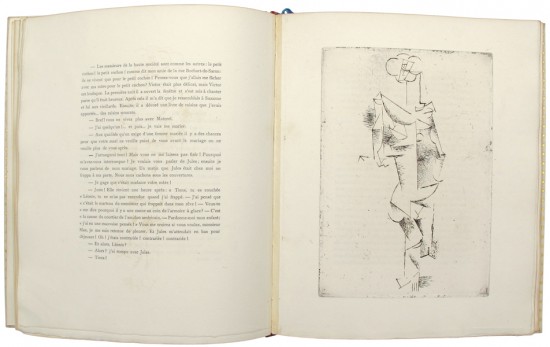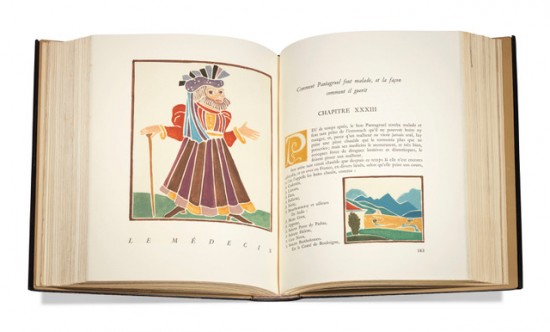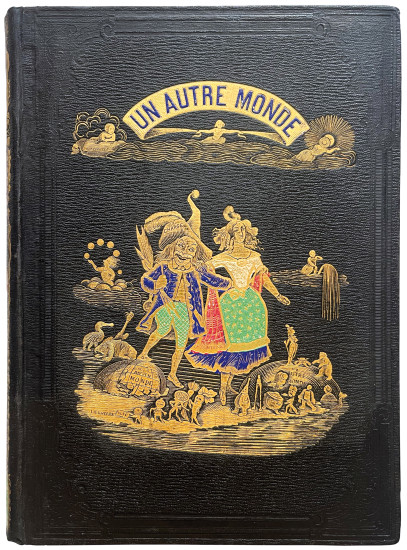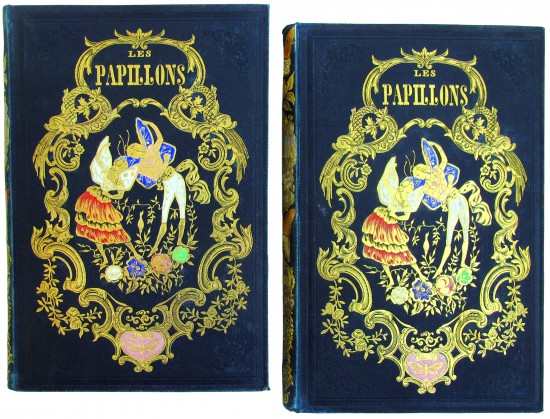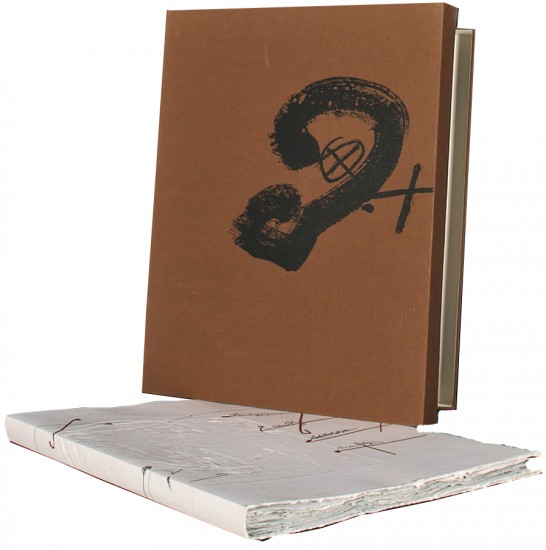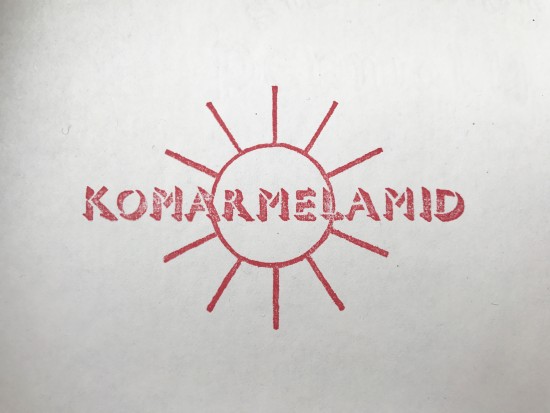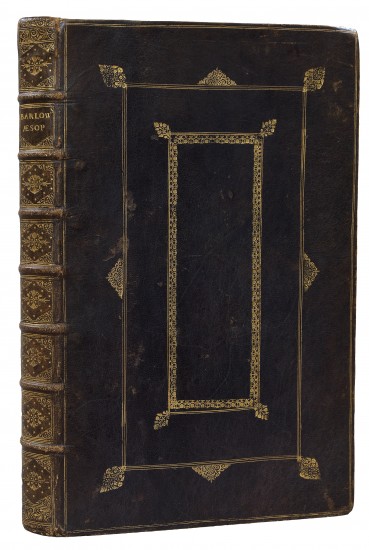Saint Matorel. Illustré d'eaux-fortes par Pablo Picasso
Picasso. Jacob, Max
Paris. Henry Kahnweiler. 1911
Sold
From the edition limited to 106 copies signed by Picasso and Jacob, with this one of 85 on 'papier de Hollande de van Gelder'.
'In the autumn of 1909 Henry Kahnweiler called on Max Jacob, then a young, little-known poet, and asked him to write a text as quickly as possible for a book to be illustrated by Derain. Kahnweiler had just published Apollinaire's L'Enchanteur Pourrissant with woodcuts by André Derain (1909), and the work he was asking Jacob to do was to be dedicated to Apollinaire.
In a few days Jacob wrote Saint Matorel. He probably was still under the influence of the vision he had had in September, 1909 which led to his conversion to Catholicism. But in the spring of 1910, Derain withdrew from his committment, refusing absolutely to illustrate what he considered to be a strange mixture of literary genres. Faced with Derain's refusal, Kahnweiler turned to Picasso, who gladly accepted the project, particularly because Jacob had been one of his earliest friends and admirers in Paris. Picasso spent the summer of 1910 with Fernande Olivier in Cadaquès, where he made some etchings for the book. Four of these were ultimately chosen.
In the presentation leaflet that he prepared for Kahnweiler, Jacob described Victor Matorel, his hero, as 'a sort of Hamlet who dies in a monastery in a state of divine grace'. But in essence, Victor Matorel is Max Jacob ... What interested Picasso were the prosaic episodes of Victor Matorel's earthly life, and particularly the character of Mademoiselle Léonie, the hero's great love ... Picasso etches her twice - standing (Plate I), and sitting on a chaise longue (Plate III) ... Plate II (La Table) may be seen as an illustration for Chapter V ... Plate IV shows the Lazarist monastery of Saint Theresa in Barcelona to which Matorel retires at the end of his life ... These etchings are important in Picasso's oeuvre, not only because of their high artistic quality, but also because they were done during a decisive phase in the evolution of Cubism.' (Cramer).
[Cramer 2; Bloch 19 - 22; Geiser 23 - 26].
'In the autumn of 1909 Henry Kahnweiler called on Max Jacob, then a young, little-known poet, and asked him to write a text as quickly as possible for a book to be illustrated by Derain. Kahnweiler had just published Apollinaire's L'Enchanteur Pourrissant with woodcuts by André Derain (1909), and the work he was asking Jacob to do was to be dedicated to Apollinaire.
In a few days Jacob wrote Saint Matorel. He probably was still under the influence of the vision he had had in September, 1909 which led to his conversion to Catholicism. But in the spring of 1910, Derain withdrew from his committment, refusing absolutely to illustrate what he considered to be a strange mixture of literary genres. Faced with Derain's refusal, Kahnweiler turned to Picasso, who gladly accepted the project, particularly because Jacob had been one of his earliest friends and admirers in Paris. Picasso spent the summer of 1910 with Fernande Olivier in Cadaquès, where he made some etchings for the book. Four of these were ultimately chosen.
In the presentation leaflet that he prepared for Kahnweiler, Jacob described Victor Matorel, his hero, as 'a sort of Hamlet who dies in a monastery in a state of divine grace'. But in essence, Victor Matorel is Max Jacob ... What interested Picasso were the prosaic episodes of Victor Matorel's earthly life, and particularly the character of Mademoiselle Léonie, the hero's great love ... Picasso etches her twice - standing (Plate I), and sitting on a chaise longue (Plate III) ... Plate II (La Table) may be seen as an illustration for Chapter V ... Plate IV shows the Lazarist monastery of Saint Theresa in Barcelona to which Matorel retires at the end of his life ... These etchings are important in Picasso's oeuvre, not only because of their high artistic quality, but also because they were done during a decisive phase in the evolution of Cubism.' (Cramer).
[Cramer 2; Bloch 19 - 22; Geiser 23 - 26].
Small 4to. Half-title with dedication 'A Guillaume Apollinaire', printed title in red and black with the woodcut vignette after André Derain and four Cubist etchings by Pablo Picasso [Bloch 19 - 22]. Plates tipped on to guards, text and plates retaining deckle edges where applicable. Full white vellum, title gilt to spine, dentelles with patterning of gilt stars, blue silk moiré endpapers and placemarker, original publisher's printed wrappers and backstrip preserved, a.e.g.
#40544
